As the Cold War reached its peak, the United States sought ever more advanced ways to defend its skies against the looming threat of Soviet bombers. Among the many aircraft developed for this purpose was the Convair F-106 Delta Dart — a technological marvel that would mark both the height and the end of an era.
This article explores the legacy of the F-106, tracing its evolution, operational history and the unique role it played in U.S. air defense.
Cold War Needs
The concept of combat interceptors reached its zenith during the height of the Cold War in the 1960s. Supersonic, purpose-built fighter aircraft were designed to engage an adversary’s high-speed, long-range bombers. Yet, it also quickly marked the end of the line for dedicated interceptors as multi-role fighters entered the picture.
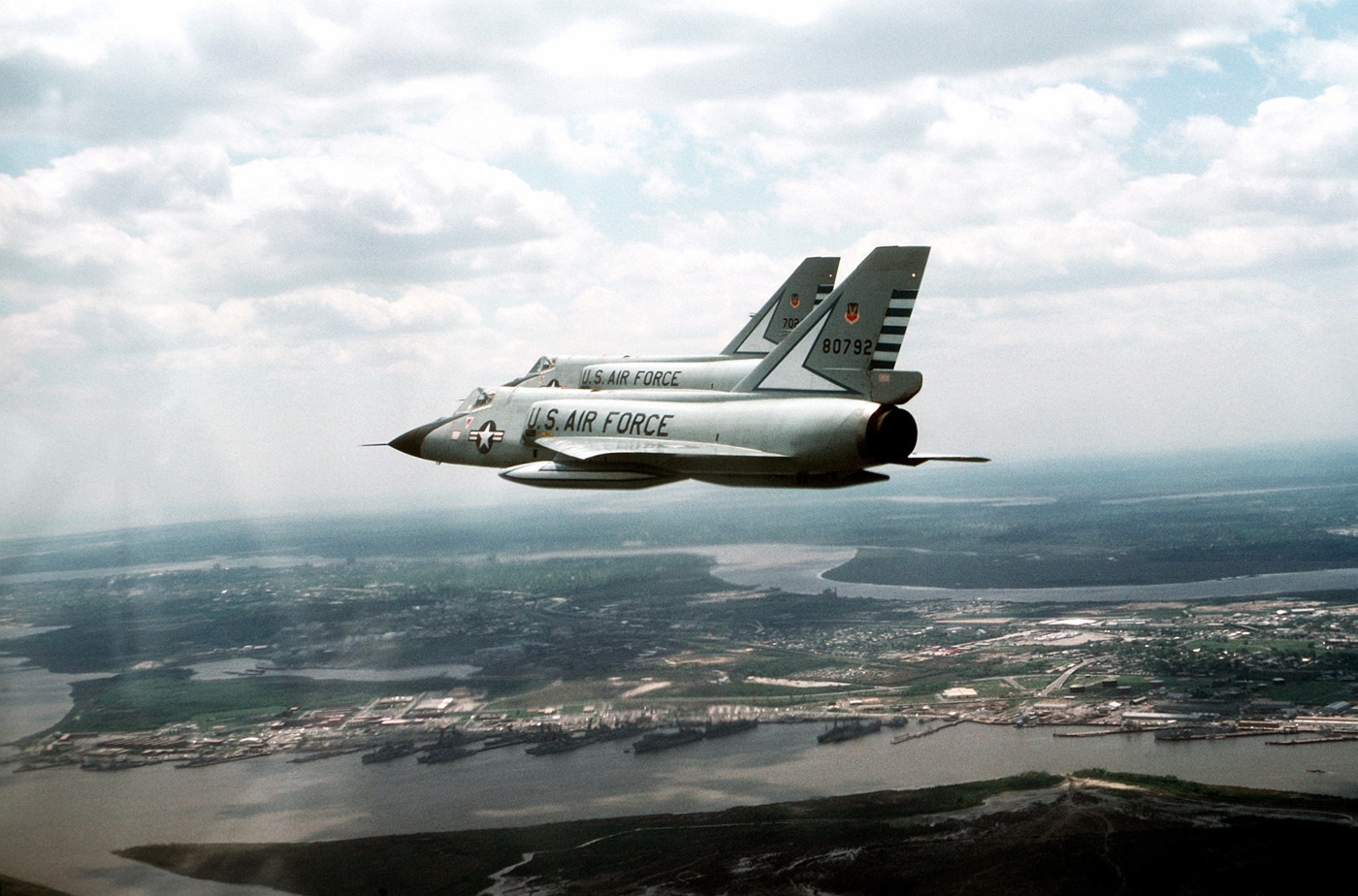
The first interceptors were little more than front-line fighters, such as the Royal Flying Corps Sopwith Pup and Sopwith Camels, which were tasked with defending the UK’s cities from Zeppelins and early bombers during the First World War. A generation later, the German Luftwaffe developed the Messerschmitt Me 262 as the first dedicated jet-powered interceptor.
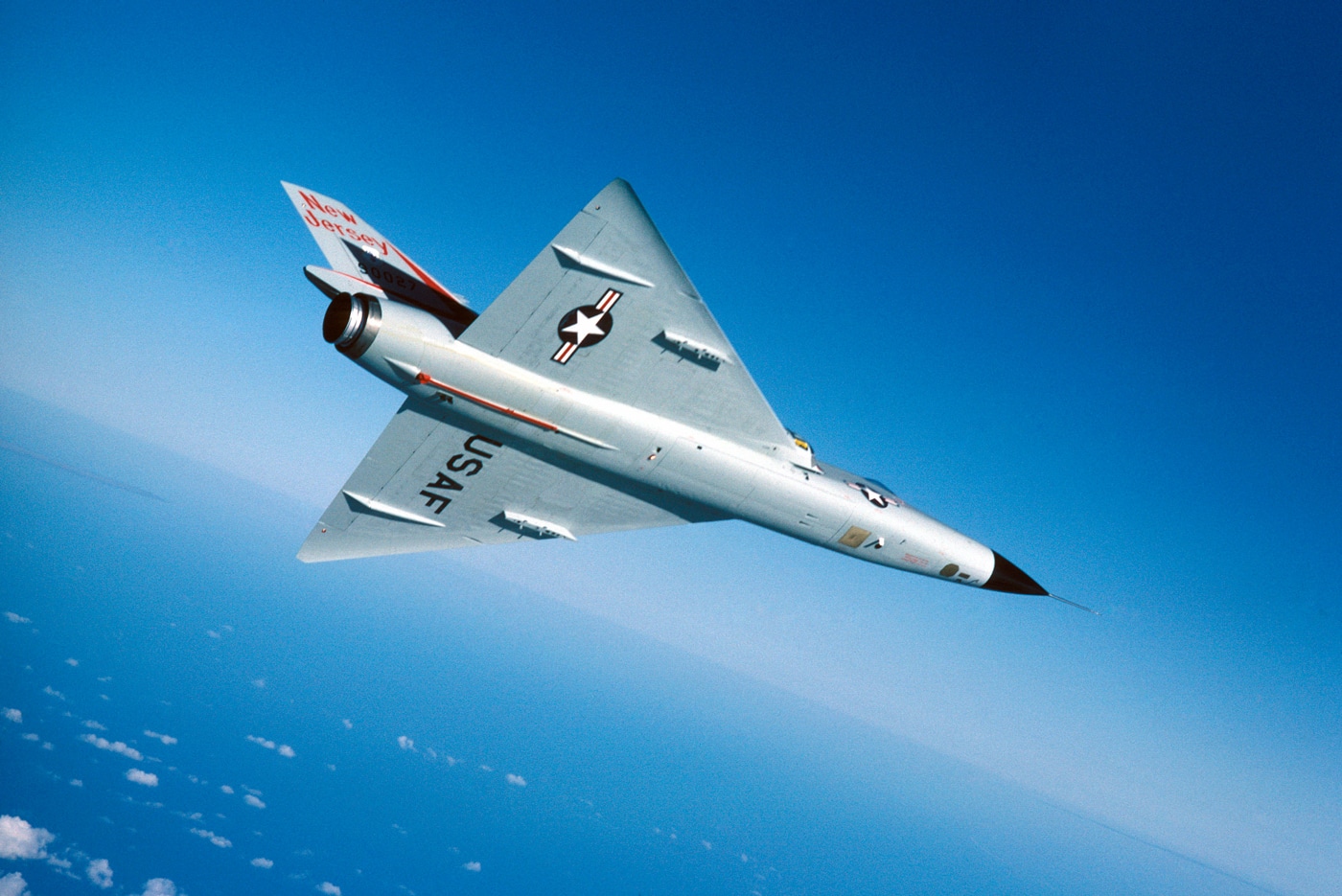
In the early stages of the Cold War, the U.S. Air Force saw a need for jet-powered interceptors to counter the threat from Soviet bombers, and that led to the introduction of the Northrop F-89 and Lockheed F-94 Starfire. Development on ever more advanced aircraft continued throughout the 1950s, resulting in the F-106 Delta Dart, an all-weather aircraft that aviation historians often cite as the “ultimate interceptor.”
The 1954 Interceptor Program
Following the Second World War and before the development of intercontinental ballistic missiles (ICBMs), Soviet bombers were considered the greatest threat should the Cold War turn hot. U.S. military planners sought to develop aircraft specifically suited to countering the bombers, resulting in the interceptors.

The aforementioned Northrop F-89 and Lockheed F-94 Starfire were the first generation of dedicated jet-powered interceptors employed by the U.S. Air Force and, in the late 1940s, the service initiated the WS-201A, informally known as the 1954 Interceptor program. This was intended to develop a far more capable interceptor aircraft that could enter service by 1954. It called for a near generational leap forward in technologies and capabilities, while it recognized that the era of multiple aircraft being able to employ similar engines and major components was largely a thing of the past.
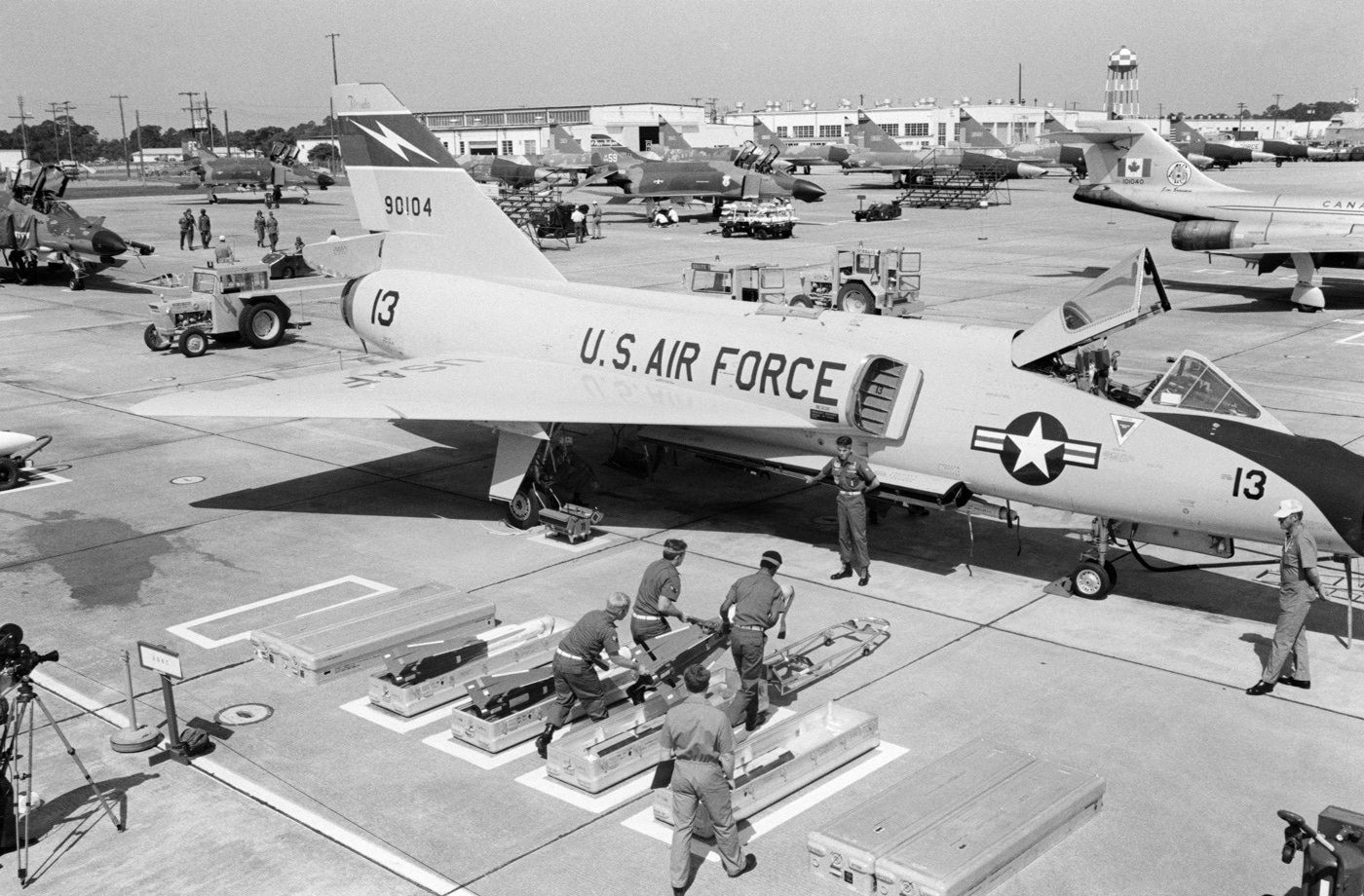
The program led to the development of several aircraft, including the F-102 Delta Dagger, the Republic XF-103, and even indirectly to the F-101B Voodoo as well as the F-104 Starfighter.
Enter the F-102 Delta Dagger
It is impossible to discuss the F-106 without first briefly discussing the Convair F-102 Delta Dagger. The F-106 was originally to be a variant of the F-102, though an extensive re-design prompted an entirely new designation. Both aircraft were part of the “Century Series” of fighters representing models designated between F-100 and F-106.
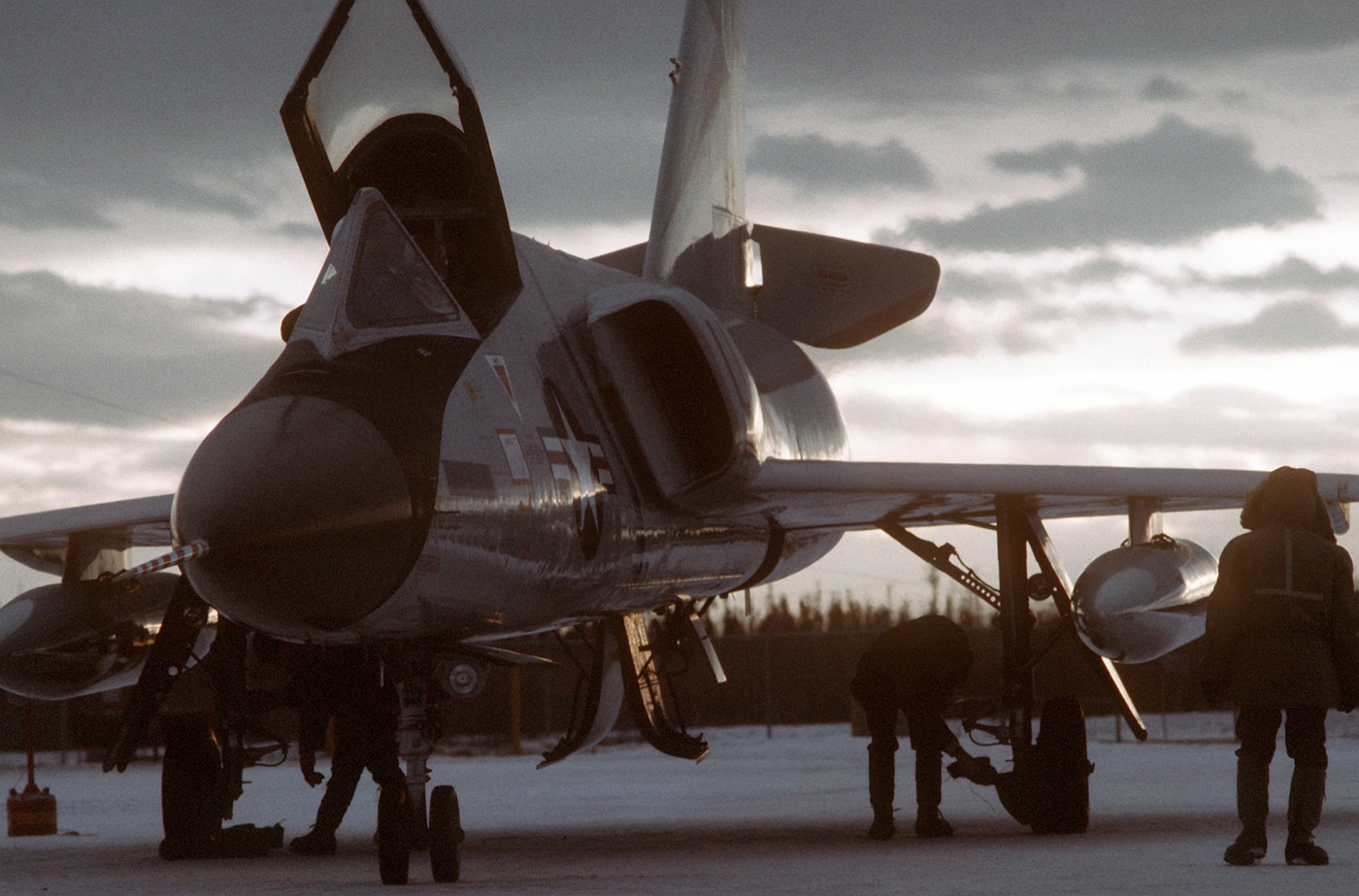
As with the F1-06, the original F-102 was developed to be the backbone of American air defenses against the Soviet strategic bomber fleet. As noted by the National Museum of the United States Air Force at Wright-Patterson Air Force Base (AFB), Dayton, Ohio, “It was the world’s first supersonic all-weather jet interceptor and the USAF’s first operational delta-wing aircraft. The F-102 made its initial flight on Oct. 24, 1953, and became operational with the Air Defense Command in 1956.”
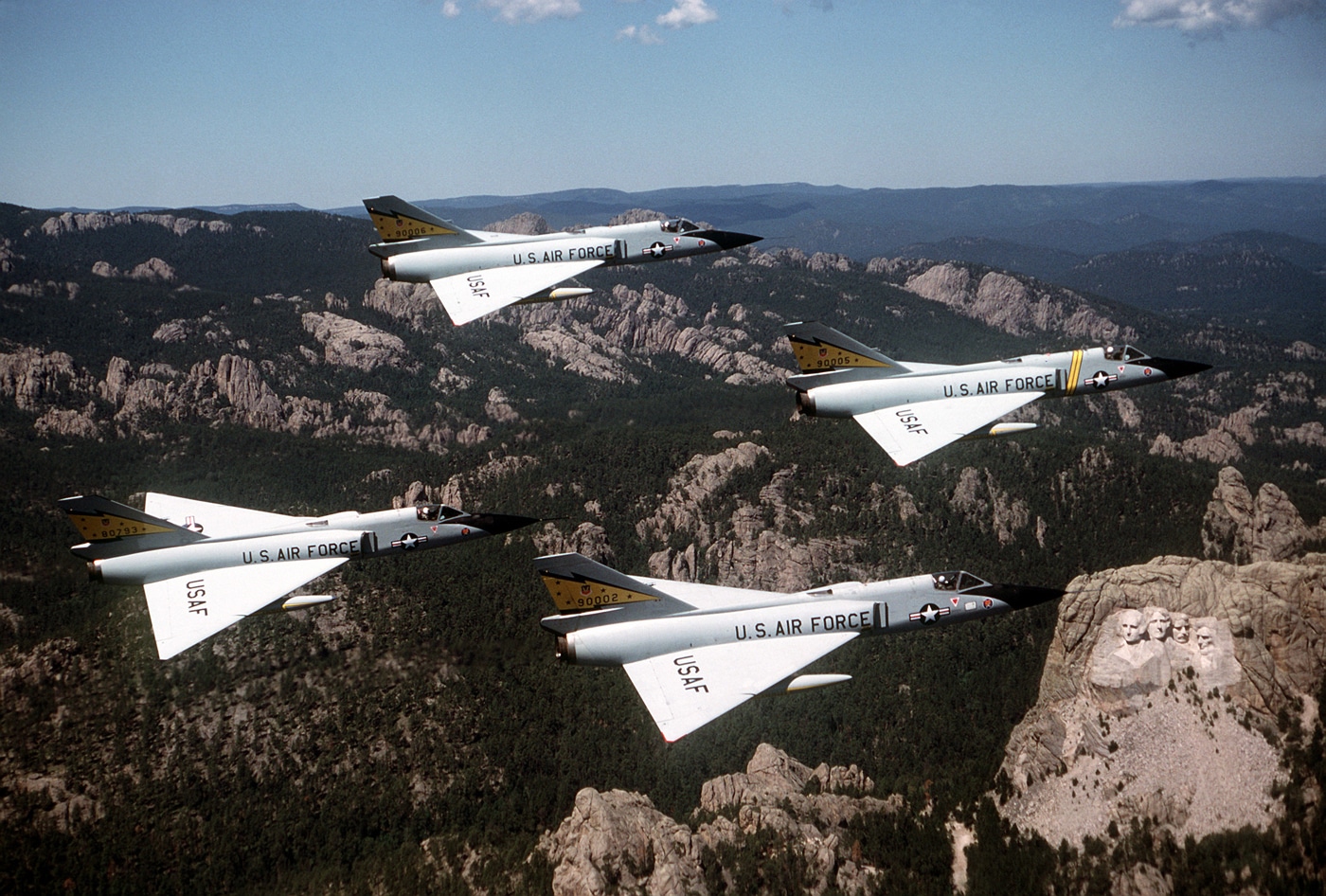
Convair went on to produce 1,000 F-102s, with 889 being the F-102A single-seat model while the remaining 111 were the TF-102A combat trainers. Unique about those was side-by-side seating, which allowed the platform to be used in training of the flight characteristics of delta-winged aircraft, including the B-58 Hustler bomber for the U.S. Air Force Strategic Air Command (SAC).
Introducing the F-106 Delta Dart
The F-106 Delta Dart was the evolutionary step forward from Convair’s Delta Dagger. Originally designated F-102B, it was also the natural development of the previous aircraft, but with a new and improved engine and advanced avionics.
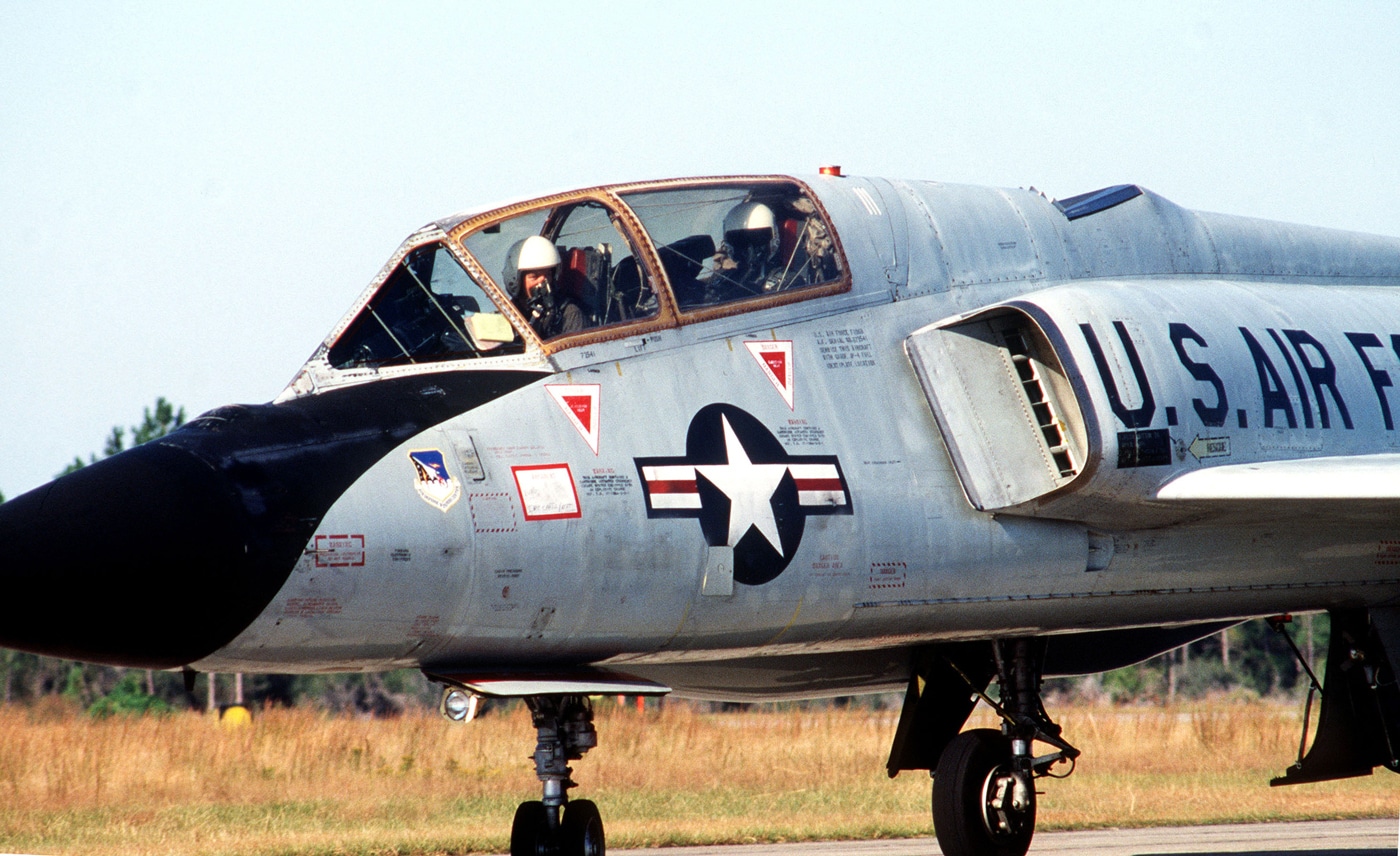
However, as it was largely redesigned from scratch, resulting in extensive structural changes, it was redesignated the F-106A. While the F-102 was outfitted with a Pratt & Whitney J57-23 two-shaft afterburning turbojet that allowed the aircraft to reach a maximum speed of 825 mph, the more powerful Pratt & Whitney J75-17 two-shaft afterburning turbojet enabled the Delta Dart to hit 1,525 mph. The F-106 had a 29,000-foot-per-minute climbing rate and a 57,000-foot service ceiling.
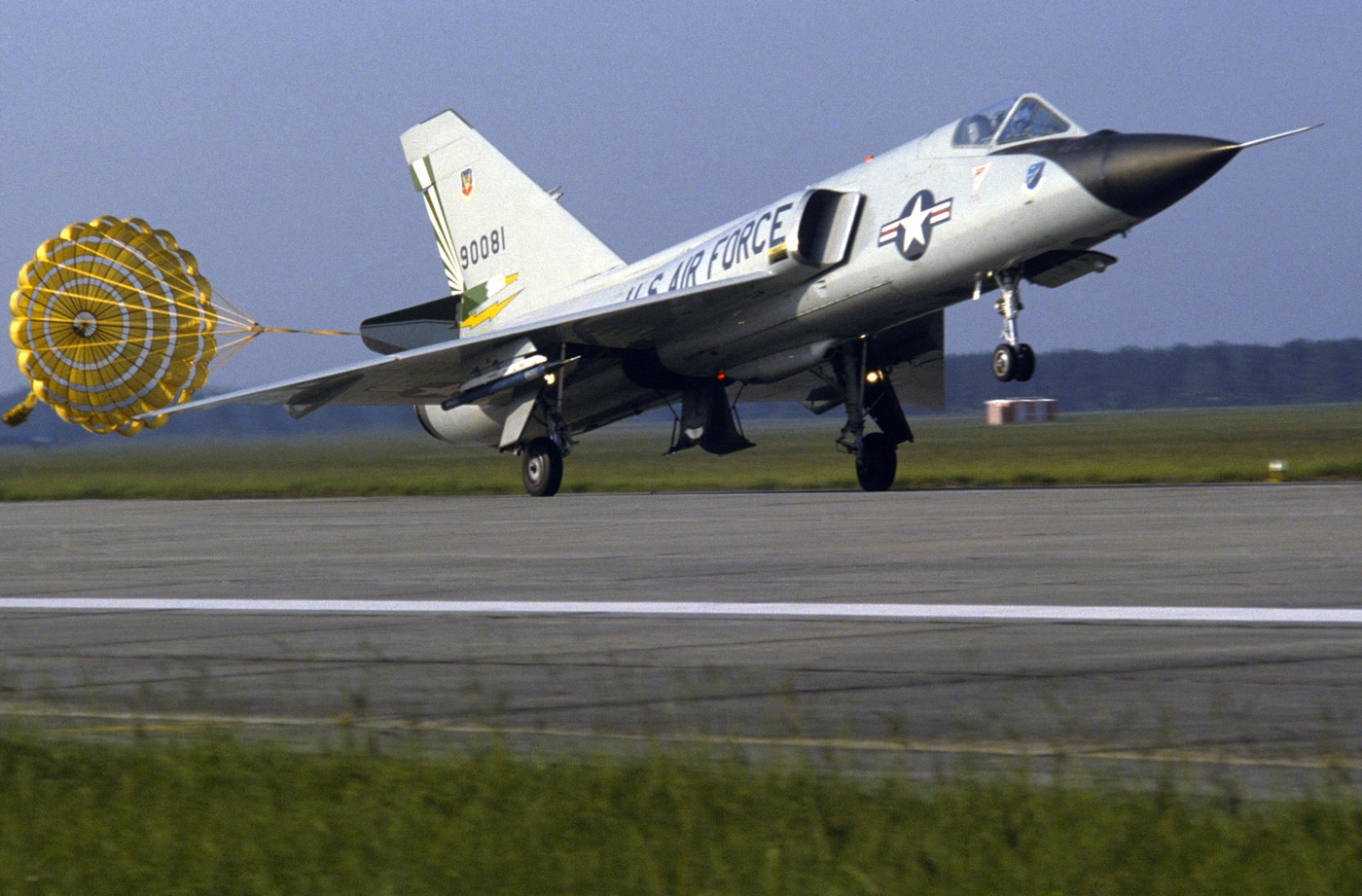
In addition to a beefier engine, the F-106 also featured a redesigned air inlet with a variable-geometry inlet duct that allowed for a wider variety of speeds. The aircraft further incorporated what was known as the “area rule,” a design procedure that determined how to best reduce drag at transonic speeds.
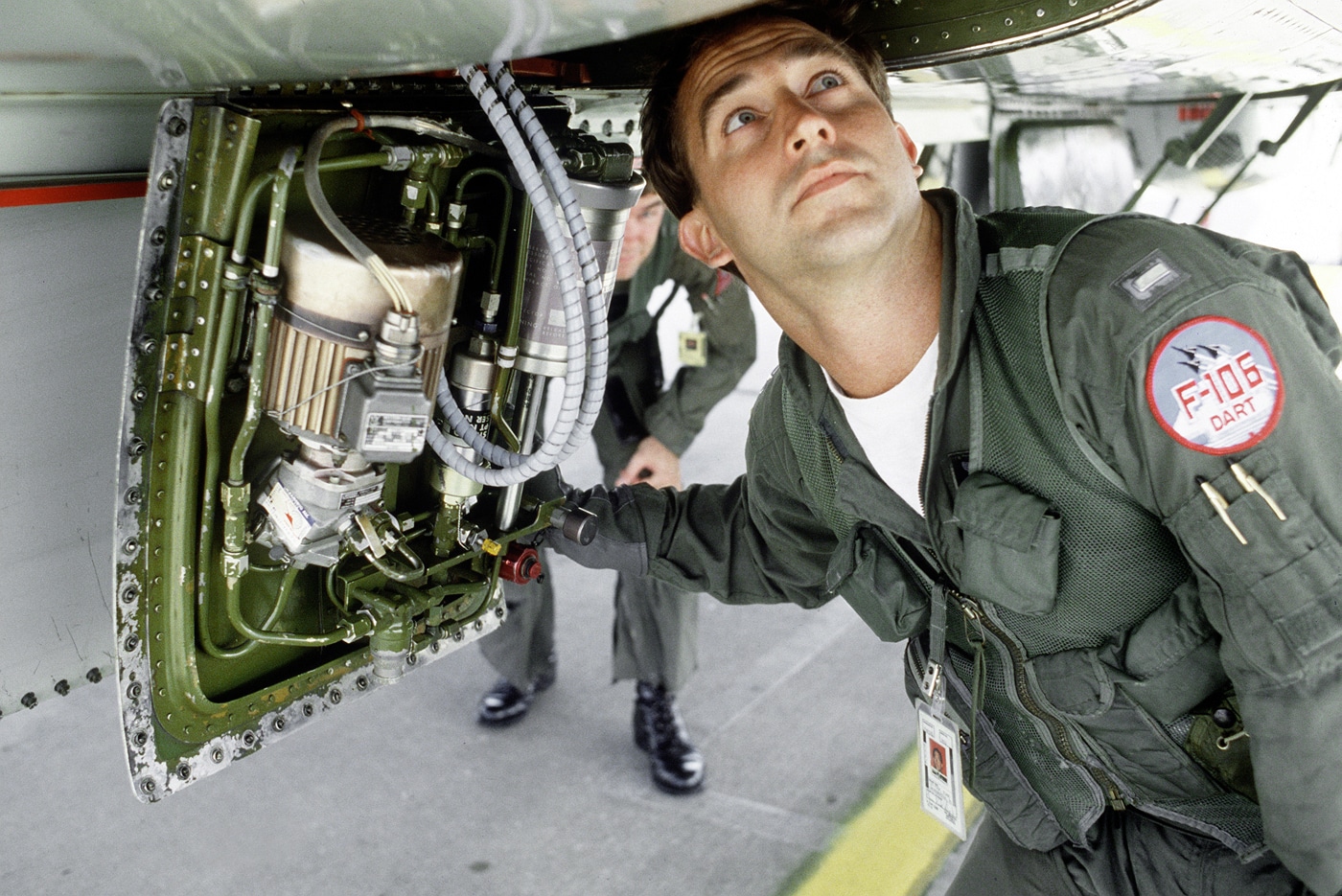
Its Hughes MA-1 fire control was no bulkier or heavier than that of the F-102, yet it was far more capable. According to the National Museum of the USAF, “After takeoff, the MA-1 can be given control of the aircraft to fly it to the proper altitude and attack position. Then it can fire the Genie and Falcon missiles, break off the attack run and return the aircraft to the vicinity of its base. The pilot takes control again for the landing.”
The Delta Dart was also integrated with the U.S. Air Force’s SAGE (Semi-Automatic Ground Environment) defense system, which consisted of large computers coordinating data from multiple radar sites and then processing it to produce a single unified image of the airspace over a wide area. The pilot could act as a supervisory manager while conducting patrols, with the computer essentially flying the plane.
Not Quite the Ultimate Interceptor
On paper, the F-106 Delta Dart seemed like it met the goal of becoming the “ultimate interceptor,” but flight testing revealed that the F-106 only performed marginally better than the Delta Dagger.
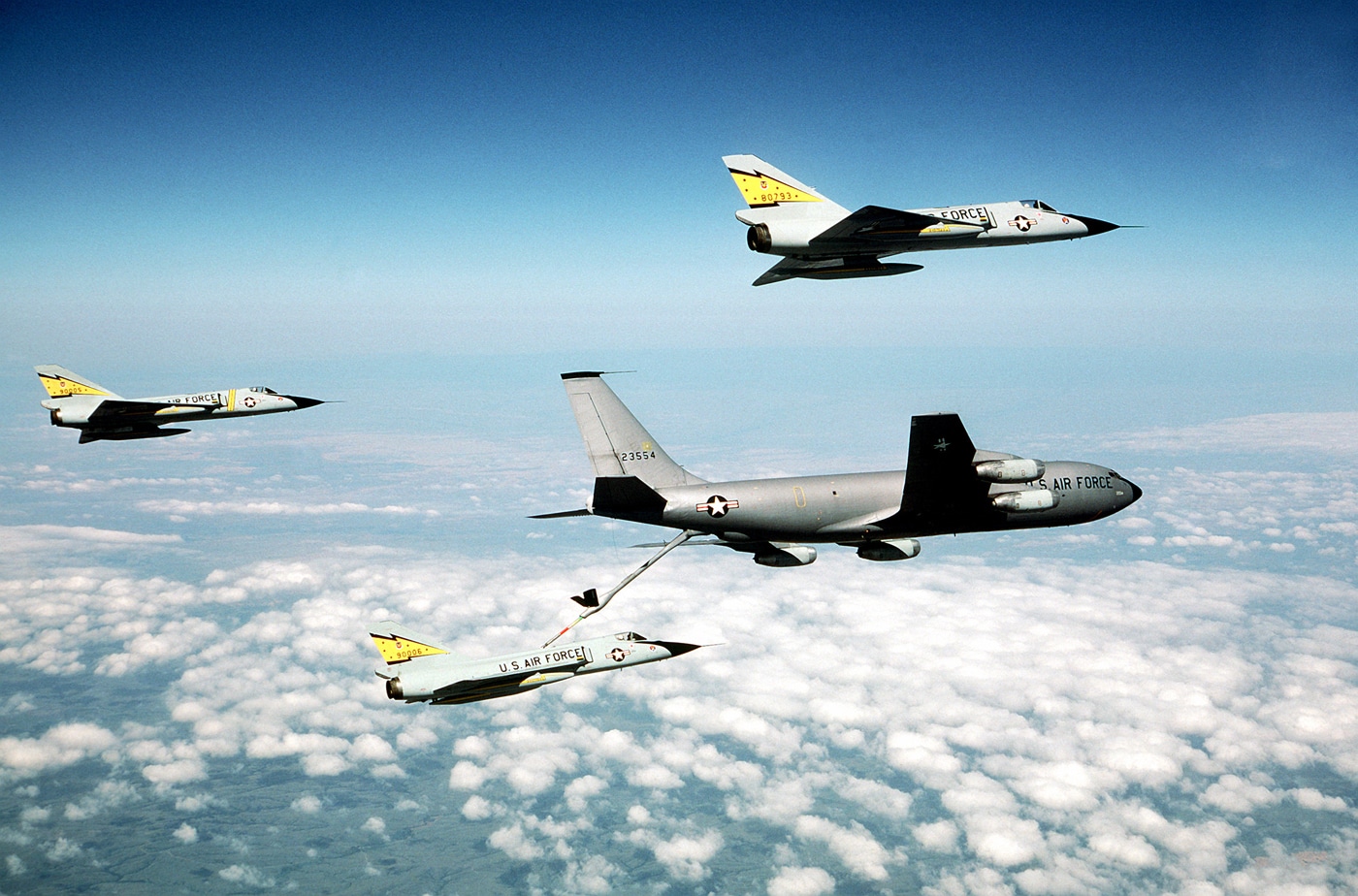
The first F-102B/F-106, serial number 56-0451, made its maiden flight from Edwards AFB in December 1956, which, according to the F-106 Delta Dart Association, “included an air abort due to air turbine motor frequency fluctuations and speed boards that opened and wouldn’t close. This first take-off was performed without afterburner.”
A second prototype, outfitted with additional equipment, made its first flight in February 1957, and it was shown to have achieved less of a performance gain than anticipated. Even more concerning at the time was that the engine and avionics proved to be unreliable.

There was serious discussion to terminate the program, but the U.S. Air Force persisted following a push from the Air Defense Command. Modifications were made, and that resulted in the service placing an order for 350 aircraft, significantly fewer than the planned fleet of 1,000 Delta Dart interceptors.
The F-106 Delta Dart officially entered service in 1959, and it became universally known as “The Six” by its operators and ground crews. It served as the U.S. Air Force’s primary all-weather interceptor throughout the 1960s. It was also on December 15, 1959, that Major Joseph W. Rogers set a world speed record of 1,525.96 mph (2,455.79 km/h) while flying a Delta Dart at 40,500 feet.
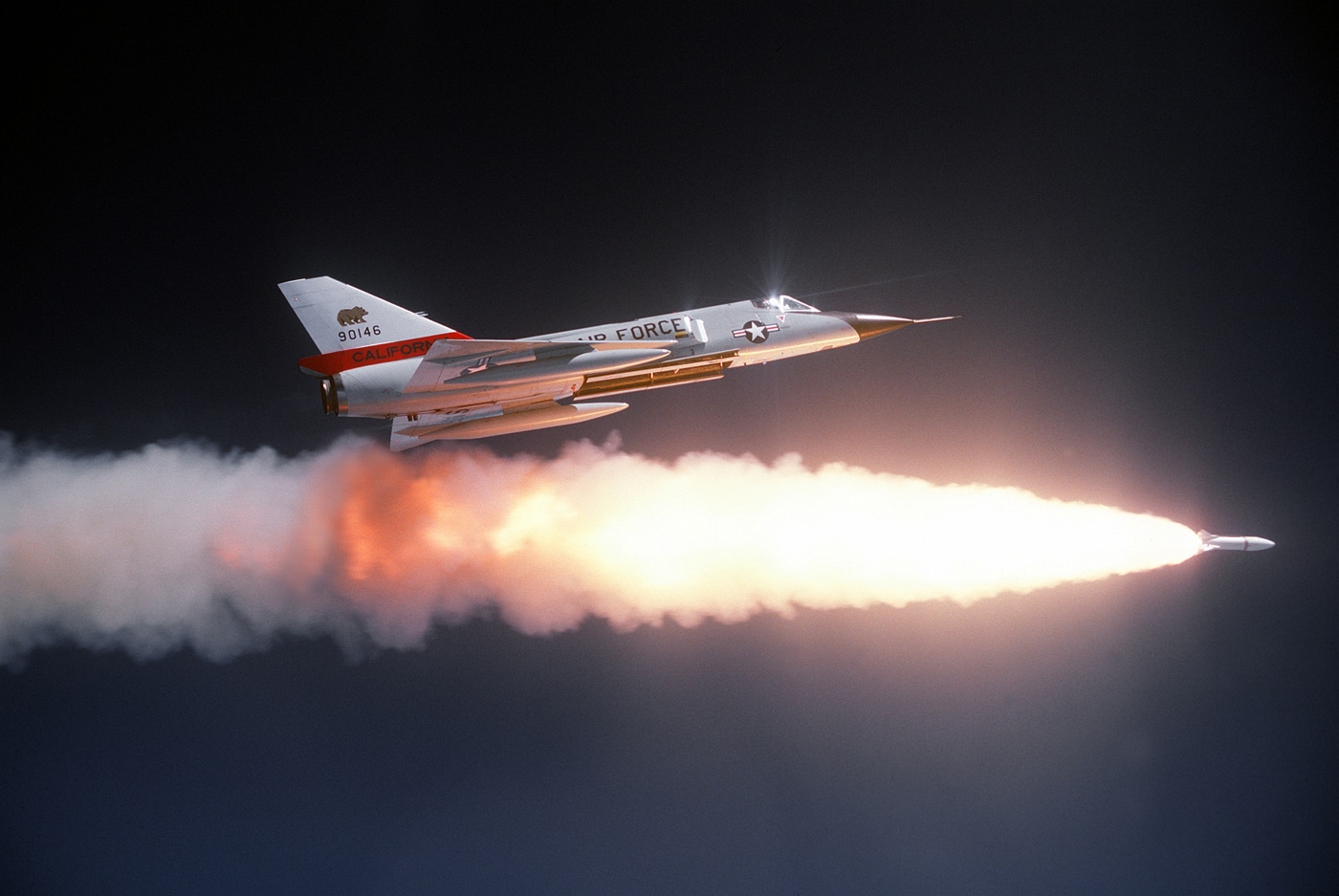
One interesting side note about the F-106 is that it was developed without a gun, and instead, its armament consisted of a single AIR-2A Genie air-to-air nuclear missile plus four AIM-4 Falcon air-to-air missiles. The Delta Dart also had no provisions to carry any bombs within its internal weapons bay. This was based on the fact that its mission solely called for destroying enemy bombers.
That presented some shortcomings, obviously, and in the early 1970s, a handful of F-106As were upgraded in Project Six Shooter, receiving provision to carry a M61 Vulcan 20mm cannon with 650 rounds of ammunition in the center of the weapons bay in place of the AIR-2A. However, many units opted to retain the nuclear payload.
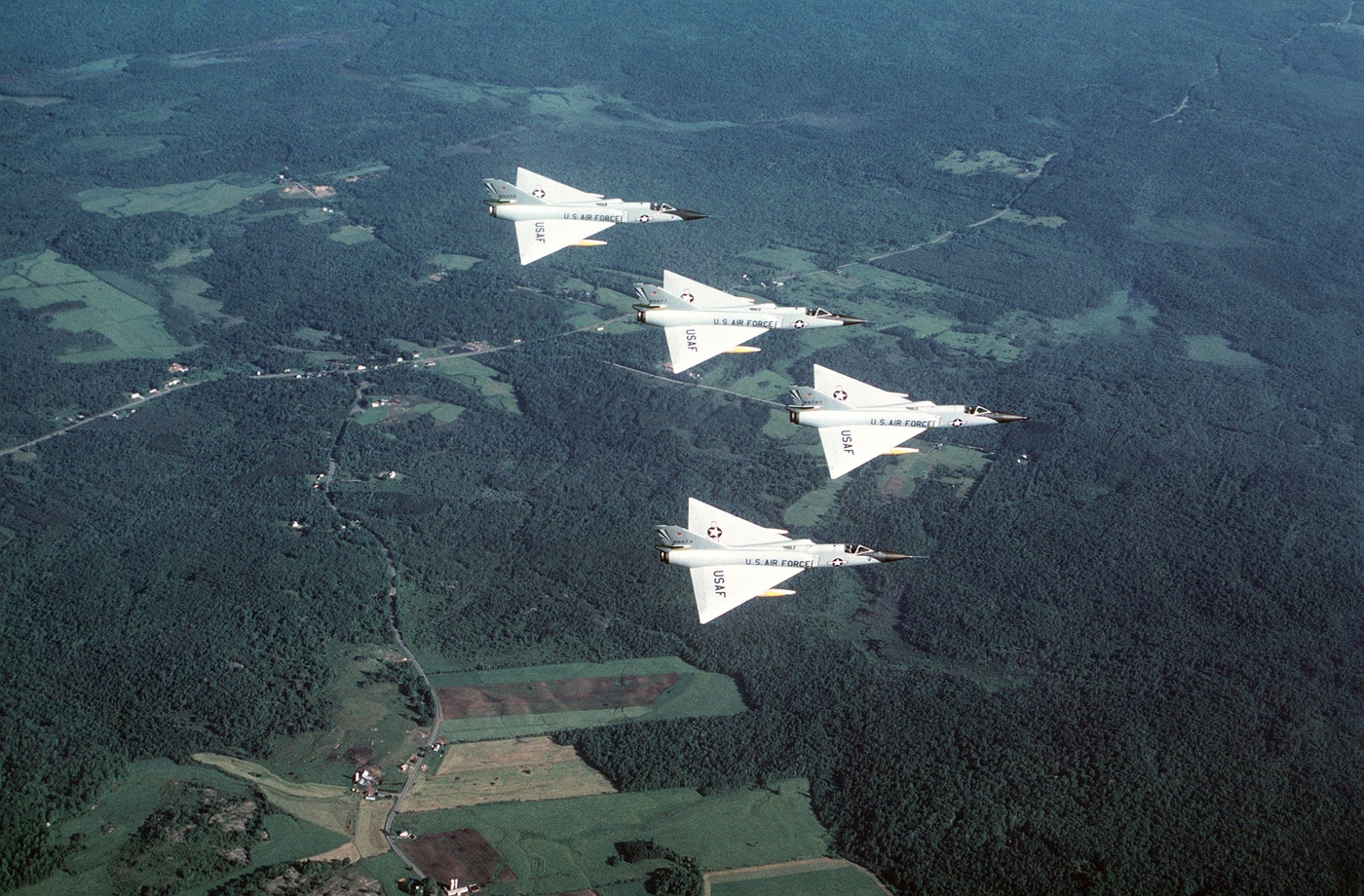
The singular mission of interceptors meant there was no future for the aircraft in the changing world.
Development of ICBMs meant that the Soviet Union likely wouldn’t need its bombers to hit targets in the United States, reducing the need for supersonic interceptors. In addition, development of multirole aircraft including the McDonnell Douglas F-15A Eagle resulted in the end of the line for dedicated interceptors, and The Sixes were passed on to Air National Guard units.
No Combat History
Though it never saw combat, the F-106A remained in service until 1988 with some Air National Guard units, while NASA retained six that were employed in a variety of research programs that included the testing of supersonic engines, and later in lightning strike research. In that latter role, during a one-hour flight in 1984 a Delta Dart was struck 72 times!
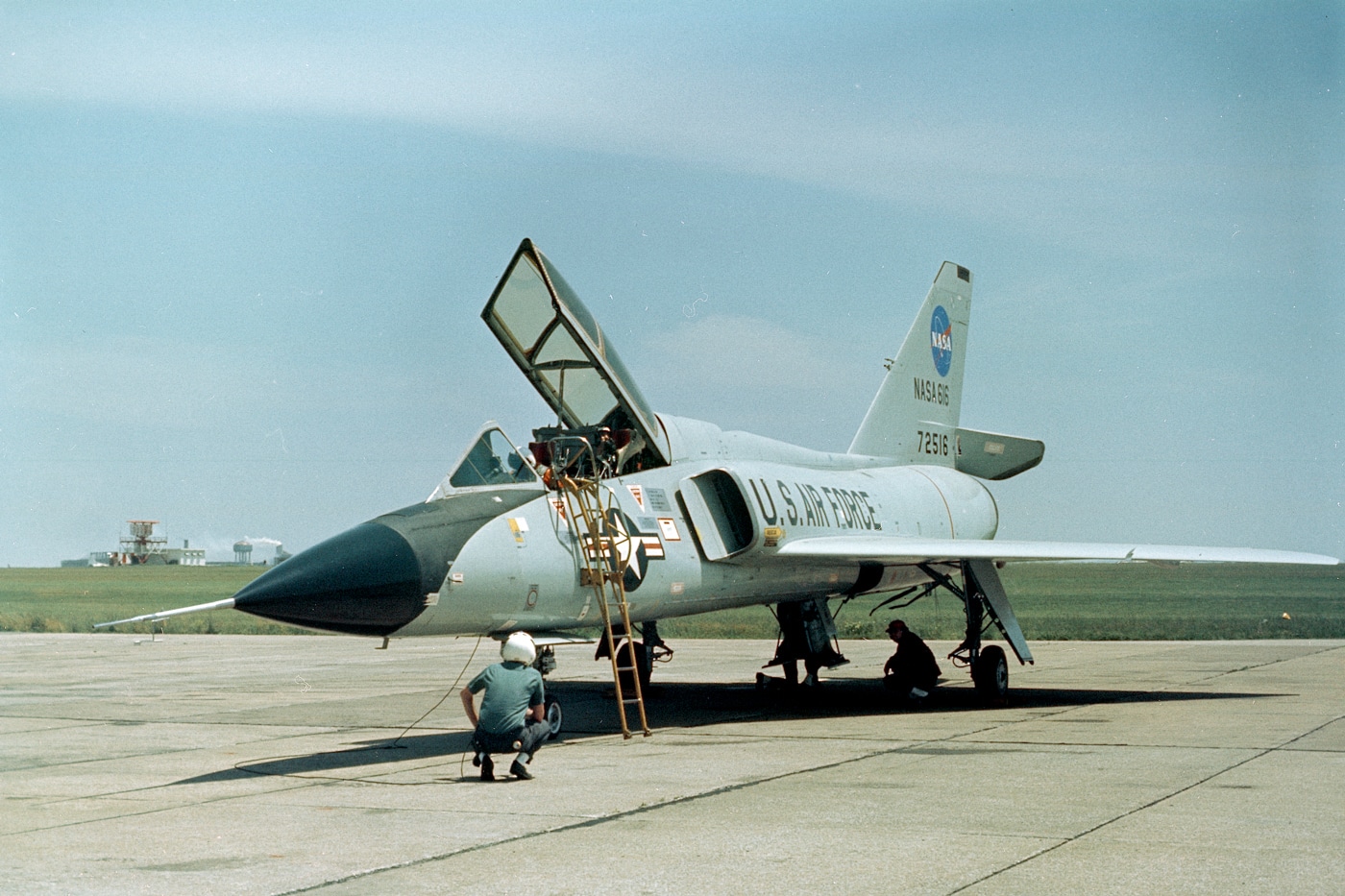
More than two-dozen F-106 Delta Daggers are now preserved and on display at various museums and bases around the United States. That includes one very special F-106 at the National Museum of the United States Air Force, which has earned the nickname “The Cornfield Bomber,” due to a highly unusual incident.
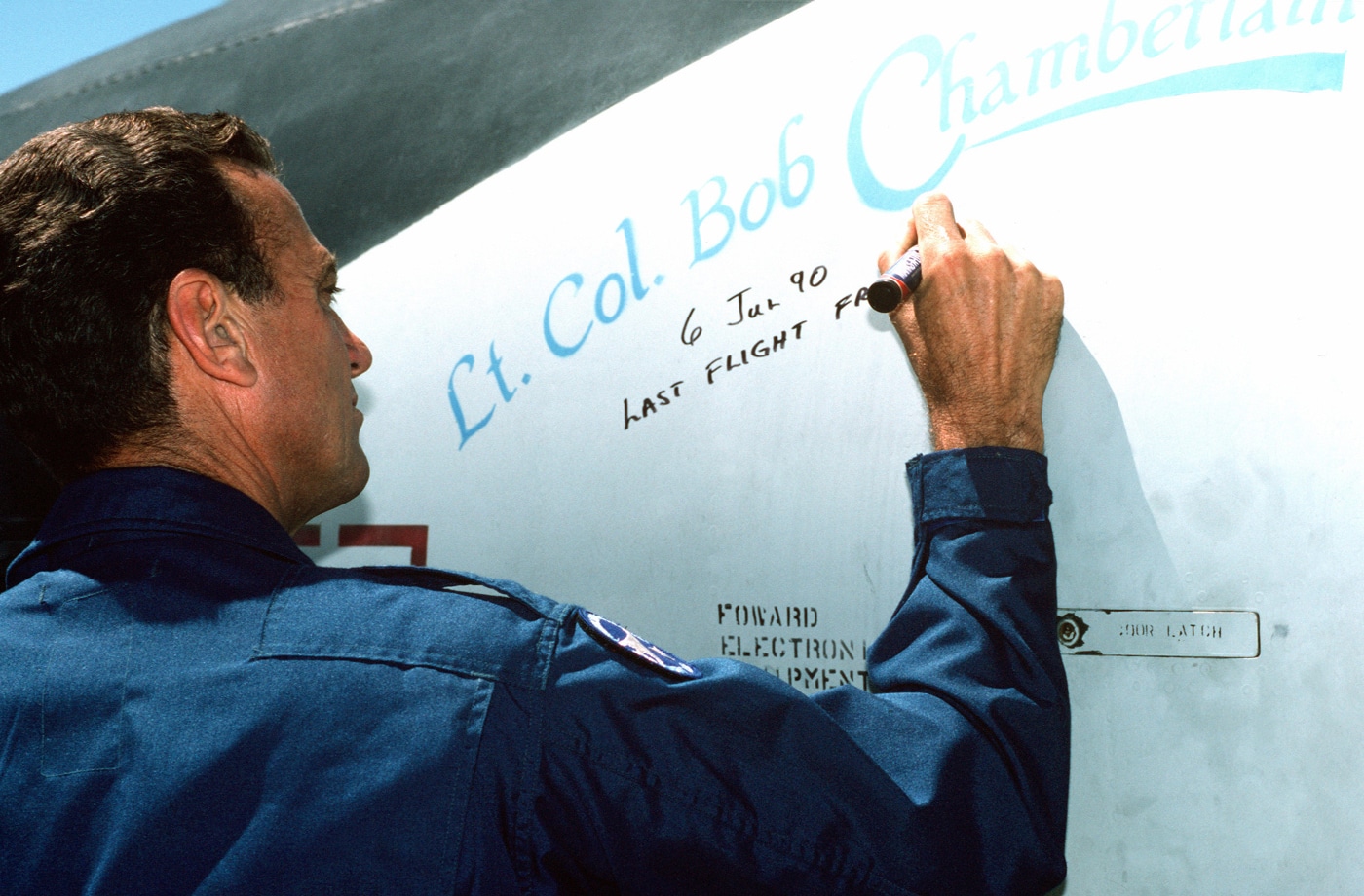
“During a training mission from Malmstrom Air Force Base on Feb. 2, 1970, it suddenly entered an uncontrollable flat spin, forcing the pilot to eject,” the Museum explained. “Unpiloted, the aircraft recovered on its own, apparently due to the balance and configuration changes caused by the ejection, and miraculously made a gentle belly landing in a snow-covered field near Big Sandy, Mont. After minor repairs, the aircraft was returned to service. It last served with the 49th Fighter Interceptor Squadron before being brought to the museum in August 1986.”
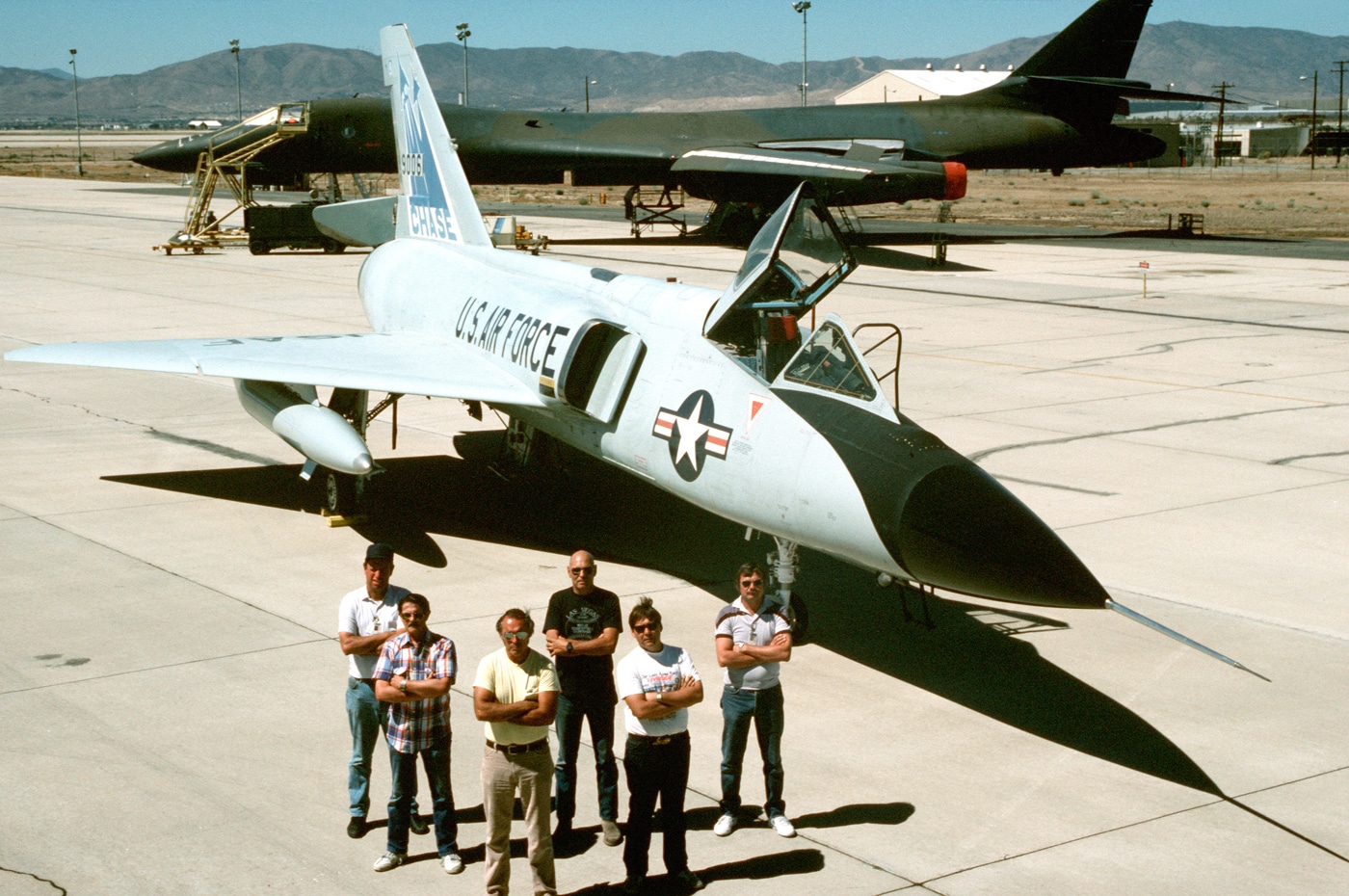
Beginning in 1986, a total of 194 surplus Delta Darts were converted to “target drones.” Redesignated the QF-106A, the aircraft were able to fly as unmanned aircraft used as flying targets. The last one was shot down at Holloman AFB, New Mexico, in February 1997.
Editor’s Note: Please be sure to check out The Armory Life Forum, where you can comment about our daily articles, as well as just talk guns and gear. Click the “Go To Forum Thread” link below to jump in and discuss this article and much more!
Join the Discussion
Read the full article here








